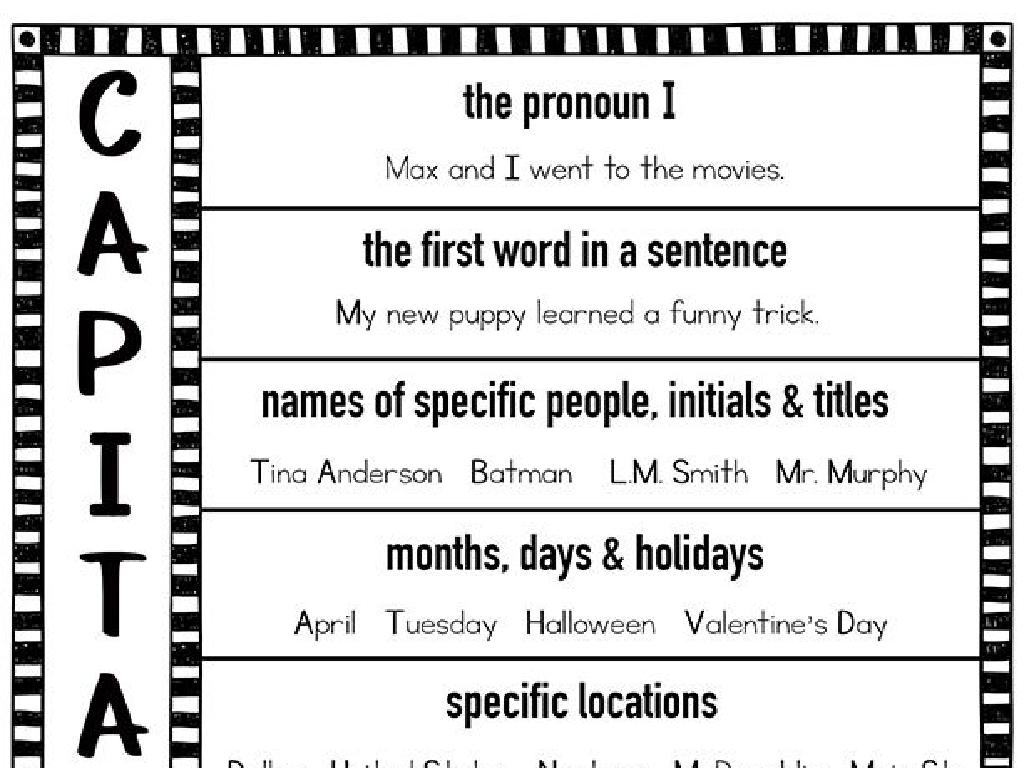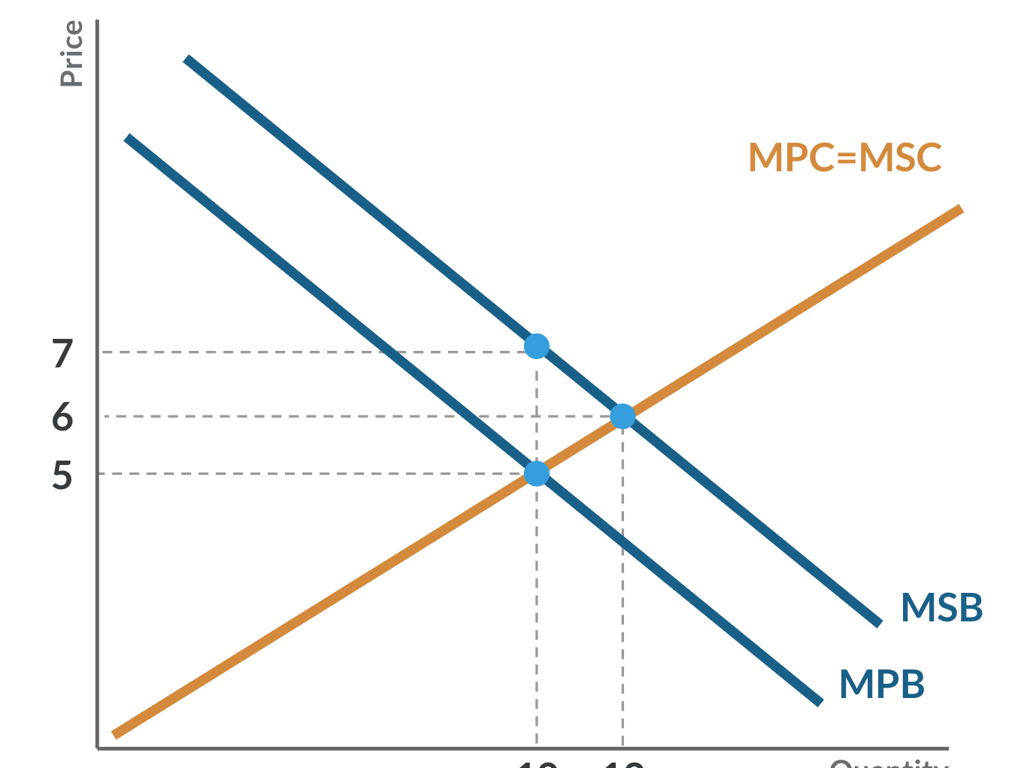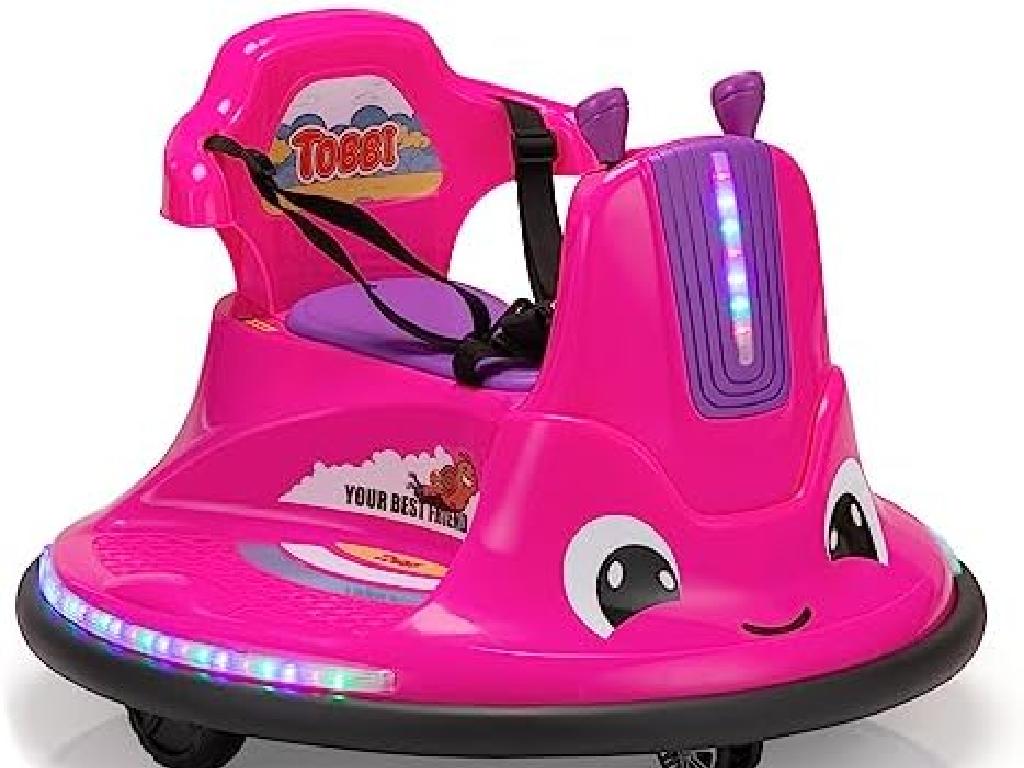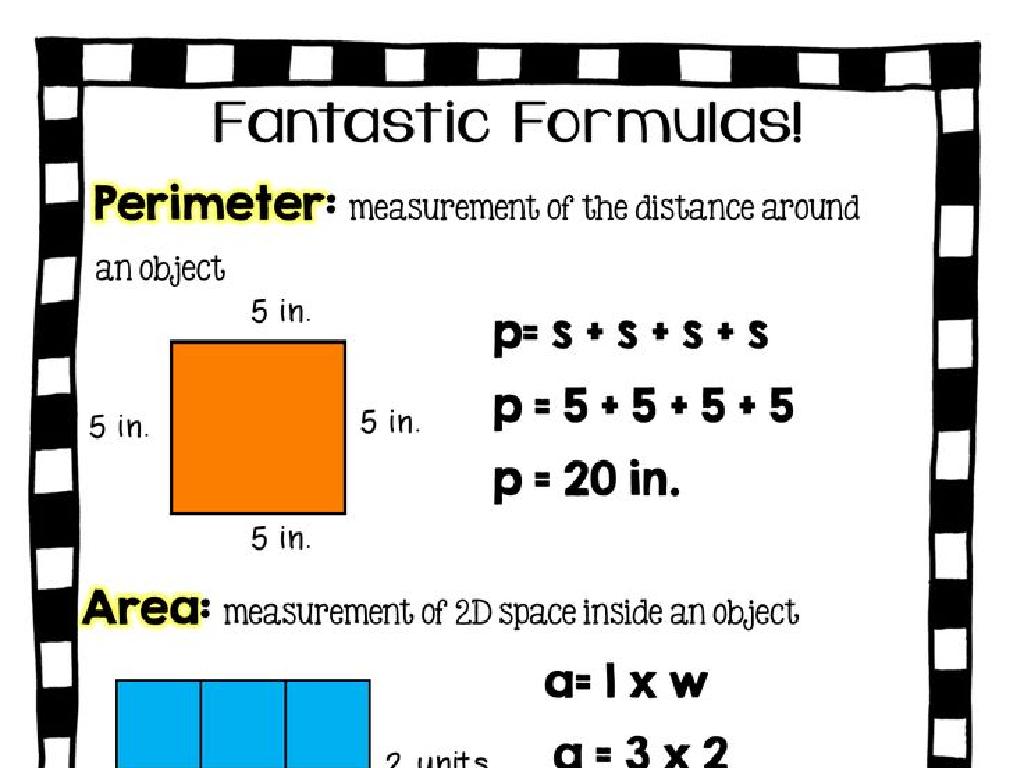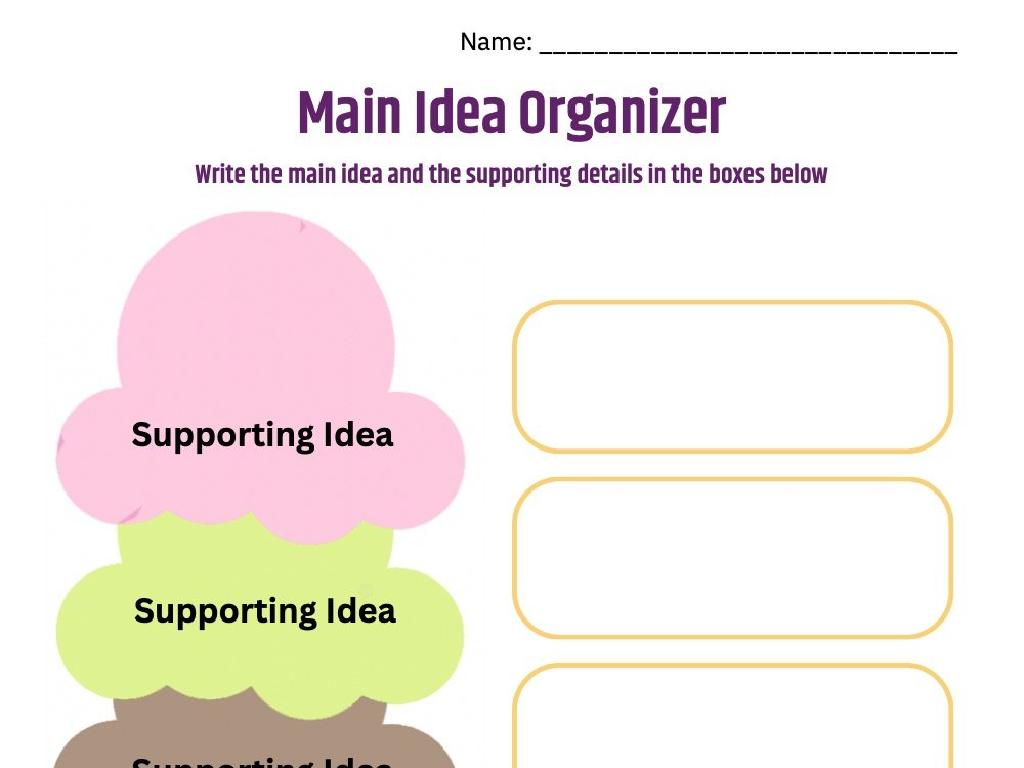Form The Singular Or Plural Possessive
Subject: Language arts
Grade: Seventh grade
Topic: Nouns
Please LOG IN to download the presentation. Access is available to registered users only.
View More Content
Mastering Possessives in Grammar
– Grasping possession in grammar
– Possession shows ownership or relationship between things.
– Singular vs. Plural Possessives
– Singular possessive: add ‘s (e.g., the dog’s bone). Plural possessive: add s’ (e.g., the dogs’ owner).
– The significance of correct use
– Using possessives correctly avoids confusion and clarifies meaning.
– Examples and usage in writing
– ‘The girl’s books’ vs. ‘The girls’ books’ show different ownerships.
|
This slide introduces the concept of possessives in grammar, which indicates ownership or a relationship between entities. Understanding the difference between singular and plural possessives is crucial for students to convey the correct meaning in their writing. Singular possessives are formed by adding an apostrophe followed by an ‘s’ to a singular noun, while plural possessives are formed by adding an apostrophe after the ‘s’ of a plural noun. Emphasize the importance of using possessives correctly to maintain clarity in communication. Provide examples to illustrate how a misplaced apostrophe can change the meaning of a sentence. Encourage students to practice by writing sentences using both singular and plural possessives.
Forming Singular Possessive Nouns
– Forming singular possessives
– Show ownership by a singular noun
– Add apostrophe + ‘s’ for ownership
– It’s as simple as adding an apostrophe and ‘s’
– Example: The girl’s book
– ‘girl’s’ indicates the book belongs to one girl
|
This slide introduces the concept of singular possessive nouns to the students. It’s important to explain that possessive nouns show ownership and that for singular nouns, we typically add an apostrophe followed by the letter ‘s’. Use the example ‘The girl’s book’ to illustrate that the book belongs to one girl. Emphasize the placement of the apostrophe before the ‘s’ for singular nouns. Encourage students to come up with their own examples and to practice by writing sentences that use singular possessive nouns. This will help solidify their understanding of how to form and use singular possessive nouns correctly.
Forming Plural Possessive Nouns
– Forming plural possessive nouns
– Plural possessives show ownership by more than one.
– Add apostrophe after ‘s’ for words ending in ‘s’
– Only add an apostrophe if the plural noun ends in ‘s’.
– Example: The girls’ books
– Shows books owned by multiple girls.
|
This slide focuses on teaching students how to correctly form plural possessive nouns. Emphasize that when a plural noun ends with an ‘s’, we simply add an apostrophe at the end to make it possessive. Use clear examples like ‘the girls’ books’ to illustrate that the books belong to more than one girl. Encourage students to come up with additional examples and to practice by writing sentences that use plural possessive nouns. This will help them understand the concept of shared ownership and how it’s represented in writing.
Irregular Plural Possessives
– Form possessives from irregular plurals
– Add apostrophe + ‘s’ to irregulars
– Use apostrophe + ‘s’ for plurals not ending in ‘s’
– Example: children’s playground
– ‘Children’ is plural for ‘child’, add ‘s’ for possessive
– Practice with more examples
– Find irregular plurals and make them possessive
|
This slide focuses on teaching students how to form possessive nouns from irregular plural nouns. Unlike regular nouns where we simply add an apostrophe after the ‘s’, irregular plural nouns that do not end in ‘s’ require an apostrophe followed by an ‘s’ to become possessive. Use ‘children’s playground’ as a clear example, since ‘children’ is the irregular plural of ‘child’. Encourage students to think of other irregular plurals such as ‘men’, ‘women’, ‘teeth’, and ‘feet’ and practice forming possessive cases for each. This will help solidify their understanding of possessive forms in the context of irregular plural nouns.
Practice: Singular & Plural Possessives
– Identifying possessive nouns
– Correcting possessive nouns
– Interactive class examples
– We’ll work together on examples
– Practice with sentences
– Use sentences to apply rules
|
This slide is designed for an interactive class activity focused on possessive nouns. Start by explaining the concept of possessive nouns, both singular and plural, and how they are used to show ownership. Then, move on to correcting sentences with incorrectly used possessive nouns. Engage the class with interactive examples on the board, asking students to identify and correct errors. Provide sentences that require the application of possessive noun rules, and encourage students to explain their reasoning. For the activity, consider breaking the class into small groups and have each group work on different sentences, then share their corrections with the class. This will help reinforce their understanding through practice and peer learning.
Your Turn: Crafting Possessives
– Create sentences with singular possessives
– Use an apostrophe and ‘s’ to show ownership, e.g., ‘The cat’s toy.’
– Form sentences using plural possessives
– Add an apostrophe after the ‘s’ for plural nouns, e.g., ‘The cats’ toys.’
– Share your possessive sentences
– Reflect on the use of possessives
– Think about how the possessive form changes the meaning of the sentence.
|
This activity slide encourages students to apply their knowledge of singular and plural possessives by creating their own sentences. Students should demonstrate the use of an apostrophe and ‘s’ to show ownership for singular nouns and just an apostrophe for plural nouns that already end in ‘s’. After crafting their sentences, they will share with the class to practice speaking and to learn from each other’s examples. The teacher should guide the students to understand how possessives can change the meaning of a sentence and why they are important in showing ownership or relationship. The teacher can provide additional examples if needed and correct any misconceptions during the sharing process.
Class Activity: Possessive Noun Hunt
– Find classroom objects for possessive forms
– Write singular and plural possessives
– For example, ‘desk’ becomes ‘desk s’ and ‘desks’ becomes ‘desks ‘
– Work in pairs on this activity
– Present your findings to the class
|
This interactive activity is designed to help students understand and apply the concept of singular and plural possessive nouns. Have the students move around the classroom to identify various objects they can claim possession of, and then write down the correct possessive form. Encourage collaboration by having them work in pairs, which will also facilitate peer learning. After completing the activity, each pair will present their list of possessive nouns, providing an opportunity for speaking practice and immediate feedback. As a teacher, be prepared to guide them through the correct formation of possessive nouns and correct any misconceptions. Possible variations of the activity could include finding possessive forms in a text, creating sentences with possessive nouns, or even a scavenger hunt for possessive nouns around the school.
Possessive Nouns: Conclusion & Homework
– Recap singular possessive nouns
– Singular possessive shows ownership by one (e.g., the dog’s bone).
– Recap plural possessive nouns
– Plural possessive shows ownership by more than one (e.g., the dogs’ park).
– Homework: Craft a short story
– Include 10 possessive nouns
– Use a mix of singular and plural possessive nouns.
|
As we conclude, remember that singular possessive nouns indicate ownership by one entity and are formed by adding an apostrophe followed by an ‘s’. Plural possessive nouns, on the other hand, show ownership by more than one entity and are formed by adding an apostrophe after the ‘s’ if the plural noun already ends with an ‘s’, or apostrophe ‘s’ if it doesn’t. For homework, students should write a creative short story that includes at least 10 examples of possessive nouns, ensuring they demonstrate understanding of both singular and plural forms. This exercise will help reinforce their grasp of how possessive nouns function within the context of writing.

